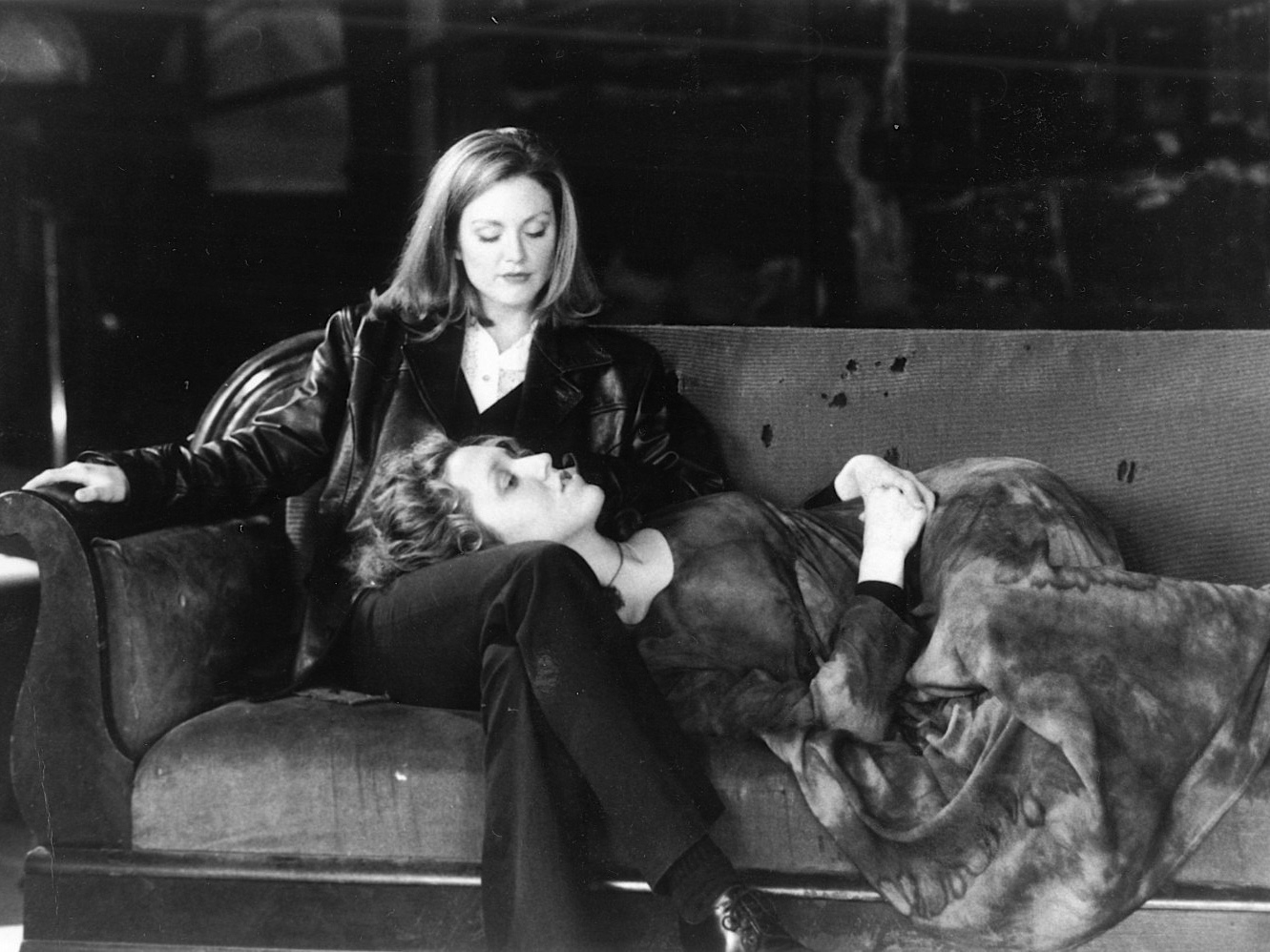
In the early nineties, theater director André Gregory mounted a series of spare, private performances of Anton Chekhov’s Uncle Vanya in a crumbling Manhattan playhouse. This experiment in pure theater would have been lost to time had it not been captured on film by Louis Malle. Vanya on 42nd Street turned out to be Malle’s last film – a tribute to the Chekhov’s devastating work as well as to the creative process itself.
EN
“Both Chekhov and Constantin Stanislavski, who directed Chekhov’s plays at the Moscow Art Theatre, hated the European theater of their time for its fakery and its tendency to showcase stars; they believed in an ensemble ethic, and Chekhov wrote scenes that can be played only with the kind of psychological realism Stanislavski trained his actors to achieve. Though audiences would certainly recognize some of the faces in Vanya on 42nd Street, only Julianne Moore (as Yelena) has had a movie star’s trajectory, and in 1994 she was just beginning to land leading roles. Gregory has a way of working with an ensemble that is strikingly at odds with the quick-pick-up approach of professional theater in the United States; you’d have to travel as far as France’s Théâtre du Soleil to find another company that takes years to cultivate a production. His aim is to permit the actors to peel open the play, layer by layer, and locate the more deeply embedded and surprising elements in their characters.”
Steven Vineberg1
“When Malle decided to direct Vanya on 42nd Street, he was by no means setting out to make a testamentary work, despite his past health concerns; the film is entirely the opposite. True, Chekhov's work is sombre, and portrays a society in decline and the pitiable aging of men; true, Malle himself felt time slipping by and old age creeping up on him. Yet this would be to impose a hasty retrospective reading on a work that, on the contrary, is based on energy, experimentation, enthusiasm and the decades-long desire to make a collaborative work with Gregory and Shawn. Vanya on 42nd Street is indeed Malle's last film, illness having interrupted the other projects being developed by the director, but it is in no way a testament film. The speed with which it was produced, the richness of its friendships and Malle's aesthetic choices make the film a harnessing of human and artistic experience that is far removed from any testamentary statement. [...] Vanya on 42nd Street is not an adaptation of Chekhov, insofar as Malle's ambition was not to adapt Chekhov's text, but rather to present a project happening in the theatre. How does one cinematically write a shared experience in which the set is an isolated space, but one that has to do directly with a collective relationship that is renewed with each performance? The relationship between film and theatre implies two distinct materials, the one being narrative and audiovisual (iconographic and acoustic), the other being the oral and corporeal performance, direct and immediate, of an often complex narration. Doubling the theatrical work with its cinematic formulation necessarily implies discrepancies and variations. Adapting a dramatic work for the cinema is the persistence of a thematic and the variation of a material' (RoparsWillemier 1970: 131) – in other words, a flexible conception of adaptation that is not stuck in a dialectics of faithfulness and betrayal. [...] The cinematic approach involves a reflection on the vacillation of boundaries (theatre, fictional film, documentary film): an erosion of forms. A veritable cinematic reading of theatre, Vanya on 42nd Street shifts the boundaries between genres and examines the place of the director as audience member in a flexible experience that primarily stages the fragile moment of the space of creation.”
Sébastien Rongier2
“Jazz in Vanya on 42nd Street is like the imprint of reality: it accompanies the bustling crowds, and subtly irrigates the film when Gregory marks the breaks between the different acts of the play [at 27:30, and again after 1:00:40]. Vanya's monologue [39:00] nevertheless merits particular attention. Following a disastrous lovers' quarrel with Yelena (during which one can already hear the sounds of the city blending with the actors' words), Vanya reflects on his condition and his calamitous existence. During the monologue (the only one in the film), the muffled faraway sound of a saxophone can be heard, making the source of the music undecidable. Is it extradiegetic, or is it part of the porosity of the real already indicated by the urban noise? It's impossible to determine, but perhaps the music points to Malle's decision to keep the character as close as possible to the real – in other words, to jazz. The music of the Joshua Reman Quartet returns during the final credit sequence, highlighting the complexity of an artistic experience that is at once theatrical, cinematic and musical. Overall, Redman's musical subtlety allows for a consubstantiality between the film and its music. The musical structure is both the urban imprint of New York (a now-classic dimension) and a subtler evocation of the work done by the actors. Their experience over the years, between rehearsals and improvisations on Chekhov's Vanya, is comparable to a jazz aesthetic. There is thus an intricate mix, a profound aesthetic affinity between jazz (both in its general structure and its particular use by Malle in this film) and the performance of the actors under Gregory's direction. This relationship is hinted at discreetly at the start of Vanya on 42nd Street; [...].”
Sébastien Rongier3
- 1Steven Vineberg, "Vanya on 42nd Street: An American Vanya", Criterion, February 28, 2012.
- 2Sébastien Rongier, "Vanya on 42nd Street: Inventing a Space of Creation," in The Cinema of Louis Malle. Transatlantic Auteur, Colombia University Press, 2018. Edited by Philippe Met.
- 3Sébastien Rongier, "Vanya on 42nd Street: Inventing a Space of Creation," in The Cinema of Louis Malle. Transatlantic Auteur. (New York: Colombia University Press, 2018), 233-245. Edited by Philippe Met.

